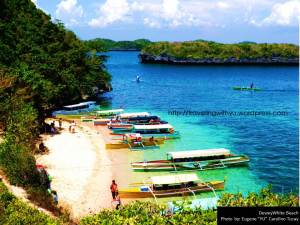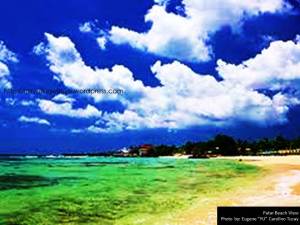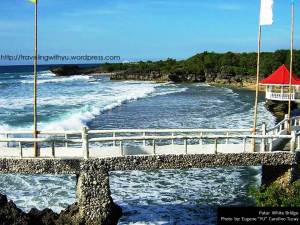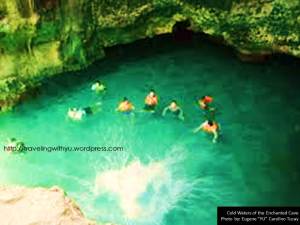After eating a full breakfast we head off to Picucubuan just
to see the port then moved to Guiguiwanen where I introduced yellowish sand
which is like “Polvoron” as per my co-travelers. The sand was really fine but the Guiguiwanen beach
which we once enjoyed swimming on when we were kids, no longer looked like the
same. The old Marinara bar is no longer there but the view is still as scenic
as it was see the vast blue ocean. There were some fish pens at the right side
but all in all it is still a great view.
Then we walked far left to see the Subor or Bukal (Spring) where we found some kids swimming and a lady washing her clothes. After which we climbed up Fatima Hill and saw more of the view from an overlooking. Then walked more toward east and found two (2) lighthouses which are smaller than usual. I remember there was only one (1) lighthouse (parola) before which concluded the other one was a new working lighthouse.
We stroll back to UP Marine Science Institute to supposedly
see some giant clams but we failed as the UPMSI’s team is at UP Diliman having
their school activity. Nonetheless we were advised to have a boat ride to
Silaqui Island for Php 600.00 by the security guard whom my tourists agreed to
pass.
I took them to my Uncle’s resort – El Pescador or The
Fisherman resort. It was midday and the sun hurts our skin so bad so we decided
to go back to my Aunt’s house (supposedly the restaurant – Mitoshi) to have our
lunch but we came too early so we had some halo-halo (with fresh ripe mangoes
which Bolinao also is famed of) to beat the heat for Php 20.00 only. Had some
laugh moments during the waiting period and we were called for our lunch with
crabs, grilled Parrot Fish, and Siganid Fish in Cashew Meat Stew. These
flavours were all been missed since childhood and it brings back memories of
picking ripe cashew fruits and of course keeping the seeds aside for roasting.





















